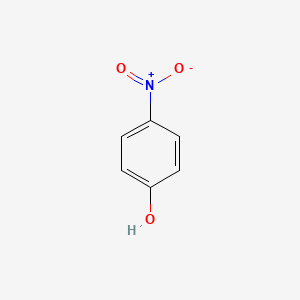D1305 | Nitrophenol
| Toxicity | Dose | Time | Species | Model | Method | Action | Positive criterion | Reference |
|---|---|---|---|---|---|---|---|---|
| ASSOCIATE WITH UNCOUPLING | rat | liver mitochondria | RST assay( Respiratory Screening Technology)-measurement of oxygen consumption in isolated mitochondria using a phosphorescent oxygen-sensitive probe A65N-1 | affect | 204 | |||
| Pictogram | Signal | Statements | Precautionary Statement Codes |
|---|---|---|---|
  |
Warning |
H302: Harmful if swallowed [Warning Acute toxicity, oral] H312: Harmful in contact with skin [Warning Acute toxicity, dermal] H332: Harmful if inhaled [Warning Acute toxicity, inhalation] H373 **: Causes damage to organs through prolonged or repeated exposure [Warning Specific target organ toxicity, repeated exposure] |
P260, P261, P264, P270, P271, P280, P301+P312, P302+P352, P304+P312, P304+P340, P312, P314, P322, P330, P363, and P501; (The corresponding statement to each P-code can be found at the GHS Classification page.) |
   |
Danger |
Aggregated GHS information provided by 181 companies from 15 notifications to the ECHA C&L Inventory. Each notification may be associated with multiple companies. H301 (26.52%): Toxic if swallowed [Danger Acute toxicity, oral] H302 (73.48%): Harmful if swallowed [Warning Acute toxicity, oral] H312 (99.45%): Harmful in contact with skin [Warning Acute toxicity, dermal] H332 (99.45%): Harmful if inhaled [Warning Acute toxicity, inhalation] H373 (98.9%): Causes damage to organs through prolonged or repeated exposure [Warning Specific target organ toxicity, repeated exposure] Information may vary between notifications depending on impurities, additives, and other factors. The percentage value in parenthesis indicates the notified classification ratio from companies that provide hazard codes. Only hazard codes with percentage values above 10% are shown. |
P260, P261, P264, P270, P271, P280, P301+P310, P301+P312, P302+P352, P304+P312, P304+P340, P312, P314, P321, P322, P330, P363, P405, and P501; (The corresponding statement to each P-code can be found at the GHS Classification page.) |
  |
Warning |
H302: Harmful if swallowed [Warning Acute toxicity, oral] H312: Harmful in contact with skin [Warning Acute toxicity, dermal] H332: Harmful if inhaled [Warning Acute toxicity, inhalation] H373: Causes damage to organs through prolonged or repeated exposure [Warning Specific target organ toxicity, repeated exposure] |
P260, P261, P264, P270, P271, P280, P301+P312, P302+P352, P304+P312, P304+P340, P312, P314, P322, P330, P363, and P501; (The corresponding statement to each P-code can be found at the GHS Classification page.) |
    |
Danger |
H301: Toxic if swallowed [Danger Acute toxicity, oral] H312: Harmful in contact with skin [Warning Acute toxicity, dermal] H318: Causes serious eye damage [Danger Serious eye damage/eye irritation] H336: May cause drowsiness or dizziness [Warning Specific target organ toxicity, single exposure Narcotic effects] H370: Causes damage to organs [Danger Specific target organ toxicity, single exposure] H372: Causes damage to organs through prolonged or repeated exposure [Danger Specific target organ toxicity, repeated exposure] H373: Causes damage to organs through prolonged or repeated exposure [Warning Specific target organ toxicity, repeated exposure] |
P260, P261, P264, P270, P271, P280, P301+P310, P302+P352, P304+P340, P305+P351+P338, P307+P311, P310, P312, P314, P321, P322, P330, P363, P403+P233, P405, and P501; (The corresponding statement to each P-code can be found at the GHS Classification page.) |

